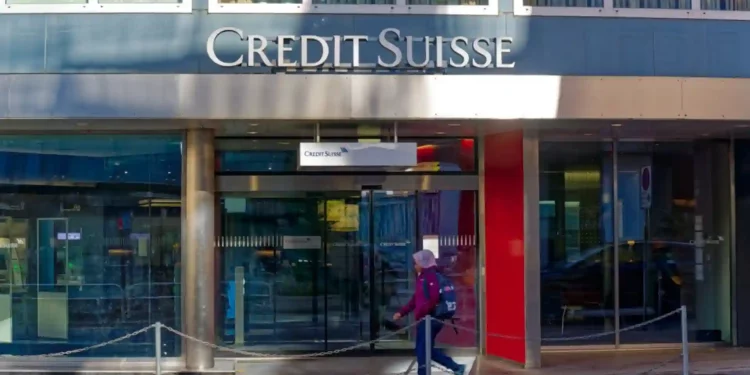The move is being highly criticized by many, as it seems to have hit a nerve among the private investors, who are now being affected by Credit Suisse’s troubles
As a part of a rescue merger with Union Bank of Switzerland, Credit Suisse released a statement, revealing that 16 billion Swiss francs ($17.24 billion) of their Additional Tier 1 debt will be written down to zero on the orders of the Swiss regulators.
Swiss financial regulator, FINMA, in a statement, said that the deal would trigger a ‘complete write-down’ of the bank’s AT1 bonds, in order to increase its core capital. The move is being highly criticized by many, as it seems to have hit a nerve among the private investors, who are now being affected by Credit Suisse’s troubles. This means that the AT1 bondholders are left with naught while the shareholders will receive $3.23 billion due to the USB deal. This has angered the AT1 bondholders of Credit Suisse since shareholders sit below the bonds on the priority ladder in light of repayment in a bankruptcy process.
In Europe’s $275 billion AT1 market, Credit Suisse’s bond wipeout seems to be the biggest loss yet, leaving behind the only other bond write-down of this kind, a €1.35 billion ($1.44 billion) loss that was suffered by the junior bondholders of Spanish lender Banco Popular. In 2017, it was absorbed by Banco Santander SA for a meager one euro, to avoid its collapse, and the equity was also written off.
The AT1 bonds were engineered to protect the taxpayers and transfer the risks to the investors, in case the banks started to fail. This was done after the global financial crisis of 2008. The bonds are designed to impose losses on bondholders or can be converted into equity if the bank’s capital ratios fall below a fixed level, propping up its balance sheet and allowing it to stay in business.
In a rare weekend session on Sunday, due to the fluctuating prices on the bonds, traders gathered to weigh in on two scenarios: a UBS buyout with next to no losses for its bondholders or nationalizing part or the whole bank by the regulator, writing off Credit Suisse’s AT1 bonds completely. When the deal was finalized, the prices wavered between 20 cents and as much as 70 cents on the dollar.
An investor in Credit Suisse’s AT1 debt, Jerome Legras, the head of research at Axiom Alternative Investments said that it was hard to understand how they reversed the hierarchy between AT1 holders and shareholders. Patrick Kauffmann, a portfolio manager at Aquila Asset Management AG said that this move made no sense and that it would be a total blow to the AT1 market.
Ralph Hamers, UBS’ CEO told analysts that FINMA made the decision to write down the AT1 bonds to zero, so as to not create a liability for the bank. According to some investors, this move would make it harder for lenders to raise new AT1 debt. Michael Ashley Schulman, partner, and chief investment officer at Running Point Capital Advisors, in a statement, said that going forward, this would make the AT1 bonds more expensive for all banks since everyone will not focus on this extra risk.
According to the data compiled by Bloomberg, Pacific Investment Management Co., Invesco Ltd., and BlueBay Funds Management Co. SA were some of the many asset managers holding the Credit Suisse AT1 notes. Their holdings might have changed or sold off entirely since their last regulatory filings. A spokeswoman for Invesco stated that its investment teams are monitoring developments consistently.
Some investors on the other hand thought that the UBS deal rendering the AT1 notes worthless was not surprising, given their downsides. According to John McClain, portfolio manager at Brandywine Global Investment Management, the bondholders of AT1 knew they were buying high-yield risk with the threat of a hand grenade attached to it. He went on to say that the bonds were created for moments like this.


















